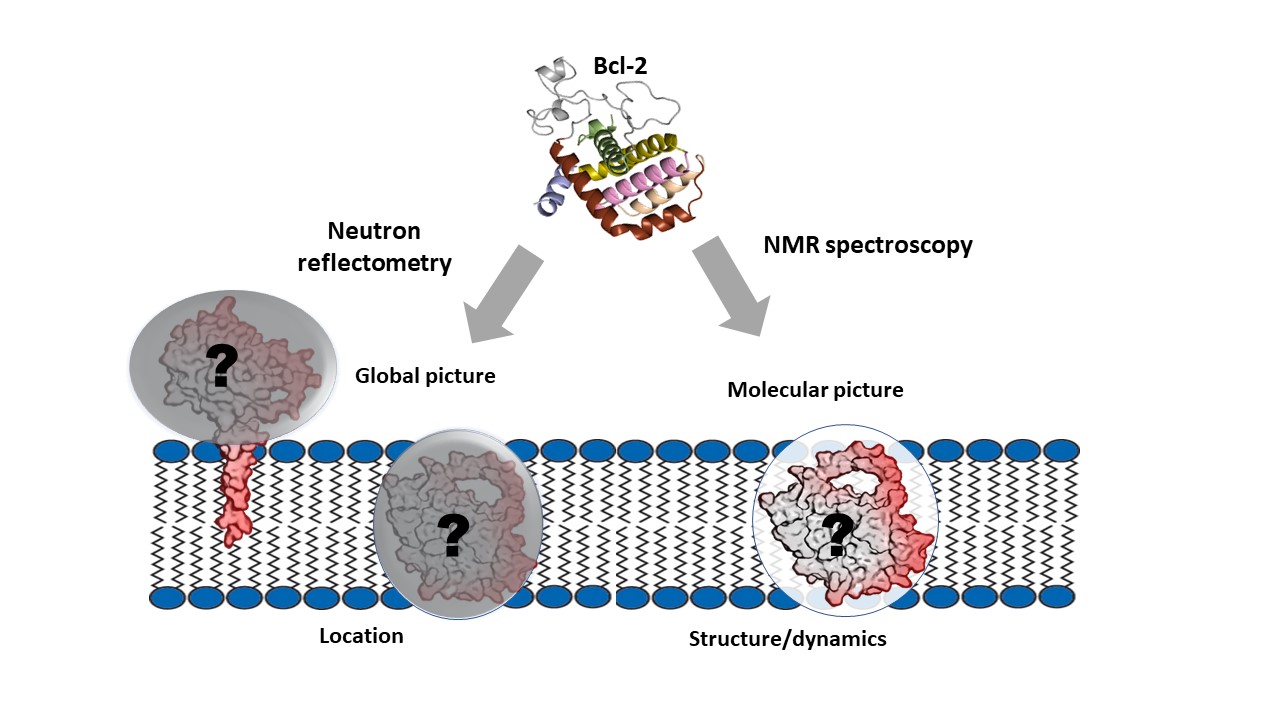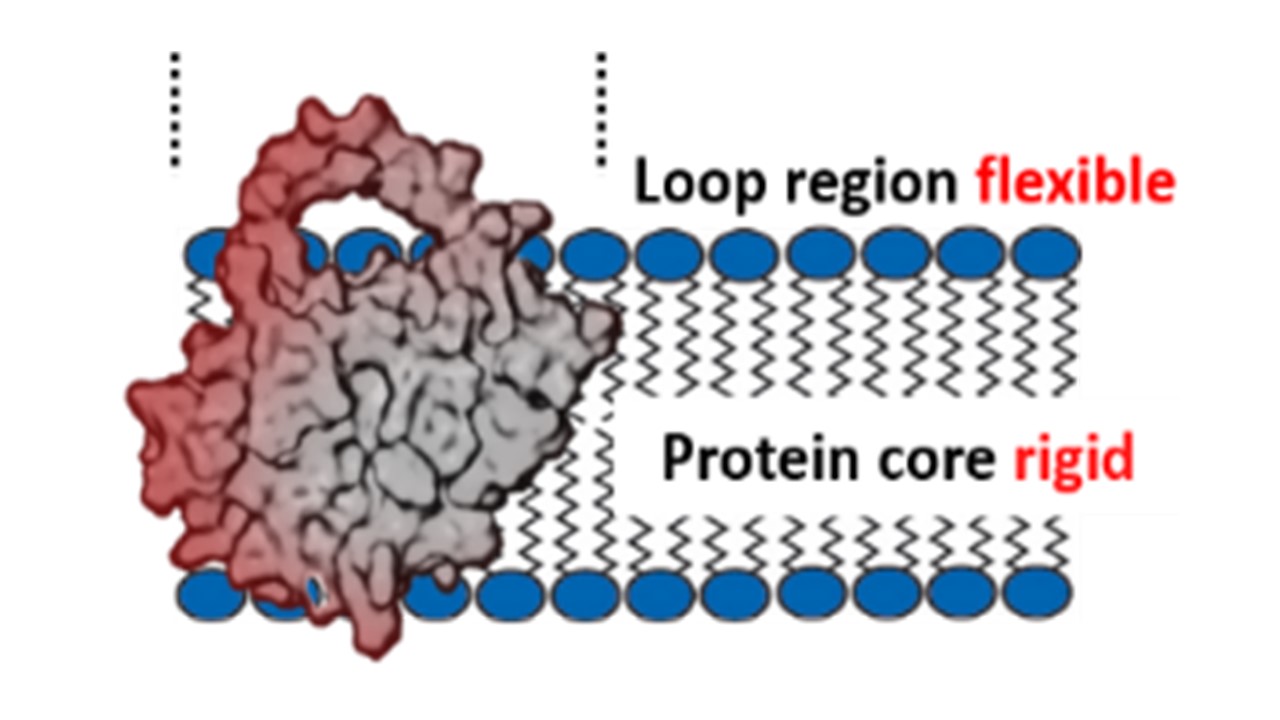Elevated function of the cell-protecting membrane protein Bcl-2 can promote cancer and cause resistance to cancer treatment. Developing an understanding of the way it does this could inform the development of anti-cancer drugs.
It may seem counter-intuitive, but cell death is crucial to overall health, and is managed by a series of proteins from the Bcl-2 family. These proteins work together at the membrane surface of intracellular organelles – the mitochondria - to determine a cell's wellbeing. However, overproduction of the cell-protecting Bcl-2 members can interrupt this delicate balance and inhibit signals for cell death. This can cause cancerous cells to continue to grow, and not respond to cancer treatment.
However, how cell-protecting and cell-killing proteins of the Bcl-2 family interact with one another in their intracellular membrane environment is not fully understood, since a picture of their structure and behaviour in this environment was not available.
In this study, published in Nature Communications Biology, the researchers used the novel combination of neutron reflectometry on Surf and NMR spectroscopy to study full length human Bcl-2 protein located in its unique membrane environment, providing insight into the key structural and dynamic features.
Their experiments have led to a significant breakthrough in the understanding of how Bcl-2 exerts its cell-protecting function at the membrane level by simply inhibiting cell-killing family members there.

Schematic representation of two complementary biophysical approaches to elucidate structural and positional information for proteins in their membrane environment.
The experiments on Surf enabled the researchers to determine the relative distribution of Bcl-2 protein across the membrane. Their results showed that the protein sits within the membrane rather than on the surface, as previously thought.
Their NMR experiments looked at individual protein segments and their behavior in the membrane, and suggest that the part of the protein that acts as a molecular switch is located on, or close to, the membrane interface. However, the main protein body that blocks the cell-killing partners, is restricted within the membrane.

Left: Location of the Bcl-2 main body inside the membrane as seen by neutron reflectivity; location of the regulative loop region (FLD) solvent accessible at the membrane surface as seen by NMR. The main protein body is dynamically restricted while the FLD region is highly flexible.
Future studies at ISIS hope to discover how the position of Bcl-2 in the membrane is related to the way that it prompts cell death.
“By integrating neutron reflectometry (NR) and NMR spectroscopy we were able to uncover the location and behaviour of the Bcl-2 protein in its native membrane," Explains study author Gerhard Gröbner; “It is a breakthrough, not only in understanding the molecular cell-protecting function of Bcl-2, but also its notorious role in cancers, thereby making this protein a prime target in the hunt for novel cancer therapies."
Gerhard adds; “Together with ISIS, we will now unravel the active state of Bcl-2 protein when caught in the act of binding cell-killing proteins at the membrane."
The research collaboration also includes the European Spallation Source (ESS). ESS is an international Big Science facility
currently under construction in Lund, Sweden, that will use neutrons for
materials research within areas including structural chemistry. Dr Hanna Wacklin-Knecht from ESS and the physical chemistry division at Lund University was part of this study, helping to optimise the samples and experimental conditions, as well as providing
the deuterated lipids for the follow-up studies on the function of Bcl-2 proteins.
Further information
The full paper can be found at DOI: 10.1038/s42003-021-02032-1
